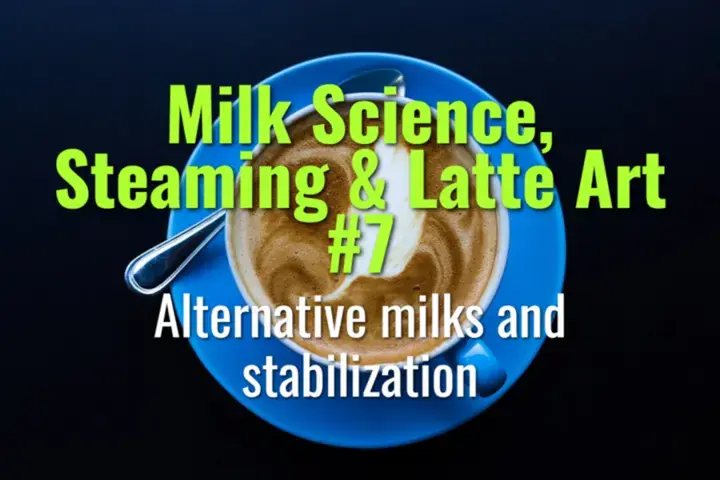Alternative milks and stabilization
How plant-based alternative milks differ from dairy in composition, their challenges in steaming, and how baristas can stabilize them for better foam and latte art.
- Coffee Basics Nerds
- 2 min read
Article 7 of 12 in Milk Science, Steaming & Latte Art/

Composition Differences
- Proteins: Lower or different structures than dairy casein/whey → weaker foam stability.
- Fats: Vary widely (almond lower fat, oat moderate, soy higher fat) → affects creaminess.
- Sugars: Different sweetness perception (oat: maltose, almond: low sugar).
- Additives: Barista blends include stabilizers (gellan gum, dipotassium phosphate) to improve foaming.
Common Alternative Milks
- Soy: Good protein content; foams well but can curdle with high acidity.
- Oat: Balanced body and sweetness; stable foam, popular for latte art.
- Almond: Lighter body; struggles to hold foam without stabilizers.
- Coconut: High fat; creamy but foam can collapse quickly.
- Rice: Thin body, poor foaming; less common for latte art.
Stabilization Strategies
- Use Barista Editions: Formulated with stabilizers and emulsifiers for steaming performance.
- Temperature Control: Foam collapses faster above 60 °C → steam to slightly lower range (50–60 °C).
- Technique Adjustments:
- Shorter stretching phase, gentler air introduction.
- Careful texturing to avoid large bubbles.
- Cup Pairing: Use with espresso blends suited to their flavor profile (oat with chocolatey espresso, almond with nutty profiles, etc.).
Flavor and Latte Art Impact
- Oat and soy produce the most dairy-like microfoam, supporting detailed latte art.
- Almond and coconut require more practice, often produce coarser foam.
- Plant milks may add their own dominant flavors, changing overall drink balance.
Summary
Alternative milks differ in proteins, fats, and sugars, making them harder to foam than dairy. Stabilized barista blends, careful temperature control, and adjusted steaming techniques allow baristas to achieve microfoam suitable for latte art while embracing plant-based options.